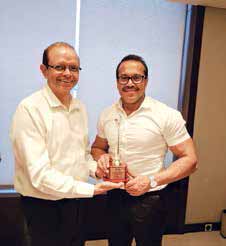Pune pipped Thiruvanthapuram and Bhubaneswar to be rated at the top of the heap. But the fact that even Pune at the top only got a 5.1 rating on a scale of 10 and all Indian cities lag far below New York, London and even Johannesburg, shows how much more needs to be done

The Annual Survey of India’s City Systems (ASICS) done for the fifth year by Bengaluru- based Janagraha threw up some interesting data and raised a number of questions. Of course, for many of us who have been involved in the major projects undertaken in Pune City and the conceptualisation and implementation of major initiatives like Digital Literacy, Skills Lighthouses and Pune Smart City, there was something to rejoice about as Pune pipped Thiruvanthapuram and Bhubaneswar to be rated at the top of the heap. But the fact that even Pune at the top only got a 5.1 rating on a scale of 10 and all Indian cities lag far below New York, London and even Johannesburg, shows how much more needs to be done in our cities at a time when rapid urbanisation seems to be inevitable in India.
While it is important to note that the Janagraha survey does not measure outcomes like air pollution, garbage management, traffic control, etc. (Bengaluru, which came in the bottom five, may have fared much worse if traffic management were to be an indicator), the “city-systems” they measure— municipal finance and staffing, spatial planning, transparency and citizen participation are definitely lead indicators of any city that is getting its act in place to deliver true value to citizens. In spite of the inevitable political pushes and pulls and the bureaucratic red tape that can delay implementations, our own experience in co-creating a unique Public Private Partnership in Pune City Connect (PCC) where State Ministers, successive Mayors, the Municipal Commissioner, large and medium corporations, individuals and civil society have all played a role has shown that Pune has what it takes to go even further and become a role model for South Asia.
There is much to be done to ensure that our cities become livable, where our children can breathe easy and become responsible citizens of the world
 Ganesh Natarajan
with Kunal Kumar,
former Municipal
Commissioner, Pune
Ganesh Natarajan
with Kunal Kumar,
former Municipal
Commissioner, PuneHaving said that, there is much to be done in Pune and everywhere to ensure that our cities become livable and provide the space for children to be brought up into a world where they can breathe easy and become responsible citizens of the world. The five pointers provided by Janagraha are worth pondering over in this regard.
Personally, I must say that I am sanguine. The two cities I spend most time in, Pune and New York have been recognised as the best in the country and the best in the world, respectively. Enough and more for a habitual optimist like me to feel good about the future! And let me end this column by wishing Kunal Kumar, the Commissioner who has led Pune Municipal Corporation with such integrity and commitment for over three years the very best in his new Joint Secretary role in the national capital. More power to excellent bureaucrats like him to lead the nation to success!
Dr Ganesh Natarajan is Chairman of 5F World, Pune City Connect and Social Venture Partners, India.
By Dr Ganesh Natarajan